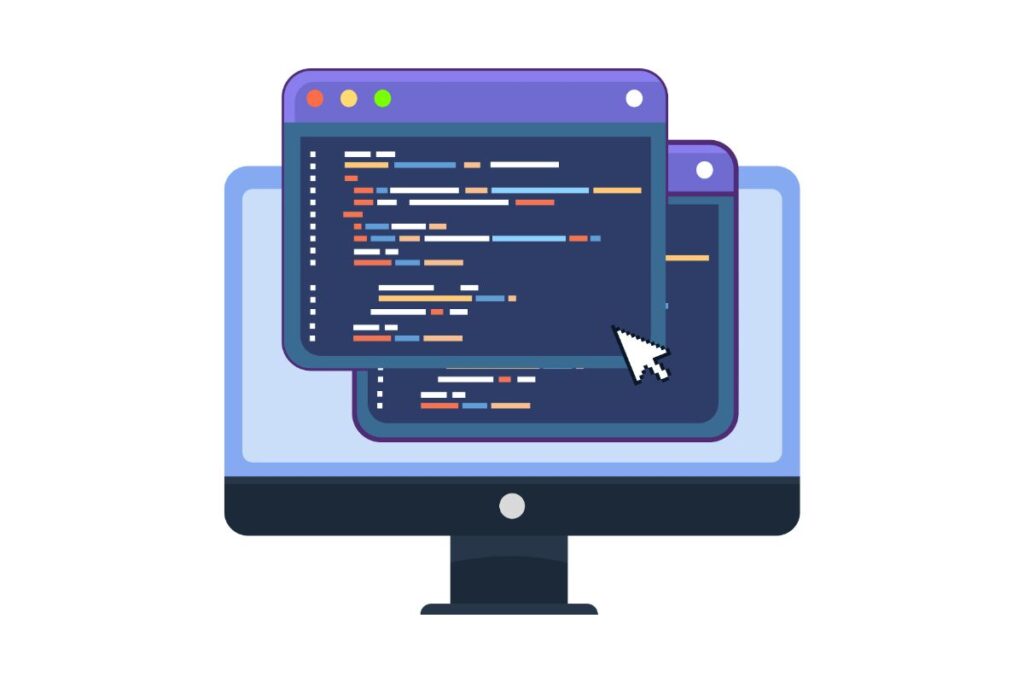In an increasingly digital world, full-stack developers have emerged as some of the most sought-after professionals in the tech industry. Their unique ability to work on both the front-end and back-end of web applications positions them as invaluable assets in creating seamless digital experiences. This blog delves into the reasons why full-stack developers are shaping the future of technology and why businesses and developers alike should embrace this versatile role.

The Rise of the Full-Stack Developer
A full-stack developer is a professional who can work on the entire “stack” of technologies required to build a web application. This includes:
- Front-End Development: Creating the user interface (UI) and ensuring the application is visually appealing and user-friendly. This involves working with languages and frameworks like HTML, CSS, JavaScript, React, or Angular.
- Back-End Development: Managing the server, database, and application logic. Popular tools include Node.js, Python, Ruby on Rails, and Java.
- Database Management: Designing and maintaining databases to store and retrieve data efficiently. Tools like MySQL, MongoDB, and PostgreSQL are frequently used.
- DevOps and Deployment: Setting up servers, managing cloud infrastructure, and deploying applications using platforms like AWS, Docker, or Kubernetes.
The demand for developers who can operate across this entire spectrum has skyrocketed due to the rise of startups, agile development practices, and the need for cost-efficient project management.
Why Full-Stack Developers Are Essential
1. Versatility Across the Stack
Full-stack developers possess a broad skill set that enables them to contribute to every aspect of a project. Whether designing a pixel-perfect UI or optimizing database queries, their ability to switch between roles reduces the need for specialized developers for each task.
This versatility is particularly beneficial in smaller teams or startups, where resources are limited, and each team member needs to wear multiple hats.
2. Cost-Effectiveness
Hiring multiple specialized developers for the front-end, back-end, and database management can be expensive, especially for startups or small businesses. A full-stack developer can fulfill these roles, reducing overhead costs without compromising quality.
This efficiency doesn’t just save money—it also speeds up project timelines, as fewer team members mean less communication overhead and faster decision-making.
3. Holistic Problem-Solving
Full-stack developers have a comprehensive understanding of how different parts of a web application interact. This holistic perspective allows them to identify bottlenecks, troubleshoot bugs, and implement solutions more effectively than specialists who might focus solely on one area.
For example, a full-stack developer who notices a slow page load time might optimize the back-end API while also improving front-end caching mechanisms, solving the problem from both ends.
4. Adaptability in a Rapidly Changing Industry
The tech industry evolves rapidly, with new frameworks, tools, and best practices emerging regularly. Full-stack developers, by virtue of their diverse skill set, are better equipped to adapt to these changes. Their experience with multiple technologies makes it easier for them to learn and adopt new ones.
This adaptability ensures that full-stack developers remain relevant and valuable, even as specific technologies fall in and out of favor.
5. Facilitating Agile Development
Agile methodologies, which emphasize iterative development and continuous delivery, have become the norm in modern software development. Full-stack developers are ideal for agile teams because they can contribute across all stages of the development process.
Whether it’s prototyping a new feature, integrating it with existing systems, or deploying it to production, full-stack developers can move fluidly between tasks, ensuring that agile sprints are completed efficiently.
Full-Stack Development in Emerging Technologies
Full-stack developers are not limited to traditional web development. Their skill set positions them at the forefront of emerging technologies such as:
1. AI and Machine Learning
With the growing importance of AI, full-stack developers can integrate machine learning models into web applications. For instance, they might create a user-facing dashboard (front-end) to display predictions generated by a machine learning algorithm (back-end).
2. IoT (Internet of Things)
IoT devices require robust back-end systems for data processing and intuitive front-end interfaces for users to interact with their devices. Full-stack developers can handle both aspects, making them ideal for IoT projects.
3. Blockchain and Web3
As blockchain technology and decentralized applications (dApps) gain traction, full-stack developers are in high demand to create web interfaces and integrate them with blockchain networks, smart contracts, and decentralized databases.
Challenges for Full-Stack Developers
While the role of a full-stack developer is undeniably appealing, it comes with its own set of challenges:
1. Breadth vs. Depth
One of the primary criticisms of full-stack developers is the risk of being a “jack of all trades, master of none.” While they may be competent in many areas, they might lack the deep expertise of a specialist in certain domains.
To overcome this, full-stack developers must continuously invest in upskilling and staying current with the latest technologies.
2. Burnout
The sheer volume of knowledge required to excel as a full-stack developer can be overwhelming. Balancing front-end, back-end, and infrastructure responsibilities can lead to burnout if not managed properly.
Employers and teams should ensure that workloads are realistic and that full-stack developers have access to training and resources to support their growth.
3. Rapid Technological Changes
Keeping up with the fast pace of technological change can be daunting. Full-stack developers need to dedicate time to learning new frameworks, libraries, and tools to stay competitive.
Tips for Aspiring Full-Stack Developers
If you’re looking to become a full-stack developer, here are some tips to get started:
- Master the Fundamentals: Focus on core concepts like HTML, CSS, and JavaScript for front-end development, and learn a back-end language like Python, Java, or Node.js.
- Learn Popular Frameworks: Familiarize yourself with widely-used tools like React, Angular, Express.js, and Django.
- Practice Database Management: Understand relational (e.g., MySQL, PostgreSQL) and non-relational databases (e.g., MongoDB).
- Build Real-World Projects: Apply your skills by creating complete applications, such as e-commerce platforms, blogs, or portfolio websites.
- Stay Updated: Follow industry blogs, attend webinars, and participate in developer communities to stay current with trends and best practices.

Conclusion
Full-stack developers represent the future of technology. Their versatility, cost-effectiveness, and ability to adapt make them indispensable in a rapidly evolving industry. As businesses strive to deliver seamless digital experiences, the demand for professionals who can bridge the gap between front-end and back-end development will only continue to grow.
Whether you’re a developer looking to expand your skill set or a business seeking efficient solutions, embracing full-stack development is a step toward staying competitive in the tech-driven world.




